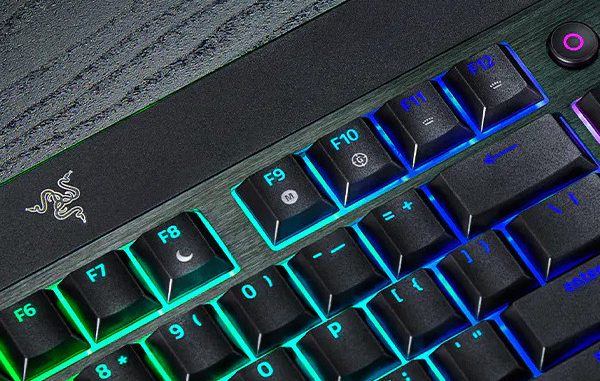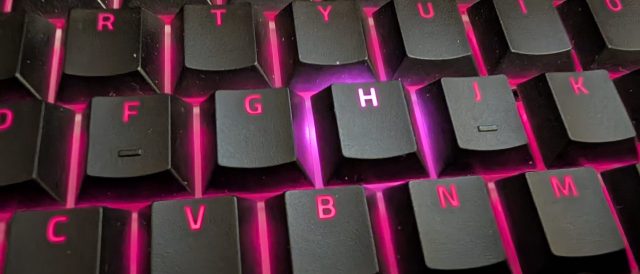
The catchily-titled BlackWidow V4 Low‑Profile Tenkeyless HyperSpeed keyboard is Razer’s ambitious attempt to deliver high‑end wireless performance in a compact, low‑profile form, ideal for more compact spaces or for anyone who doesn’t want the bulk of an average gaming keyboard. Right out of the box you get triple‑mode connectivity: 2.4 GHz HyperSpeed wireless, Bluetooth, and USB‑C wired, and as soon as you hook this up you’ll be seeing and feeling the quality pretty much immediately.
Razer’s new low‑profile mechanical switches are a major headline, and feel really nice under the fingers. You can choose between Green (clicky), Orange (tactile), or Yellow (linear) variants, each rated for up to 80 million keystrokes, just in case you fancy counting. The housing is shorter, the actuation distance smaller, and the overall design is aimed at faster reflexes and lower wrist strain during long gaming or typing sessions. It’s effective too, and after some lengthy sessions on the likes of Fortnite and Borderlands 4 I was certainly feeling the difference from my previous “normal” gaming keyboard. These games also highlighted the wonderful game-specific Chroma settings, adapting the RGB of the keyboard to suit the game automatically. Specific keys highlight depending on the scenario, the entire keyboard could go red when health gets low, and in games like Terraria the keyboard matches the ambient goings on in-game with stars twinkling at night and matching the sunrise movement in the morning. Very cool.

There’s plenty of great performance features as well; you’re getting a pretty mighty 1000 Hz polling rate over the 2.4 GHz dongle (which stores nicely in the side of the keyboard if you choose to put it away for a while), and full N‑key rollover and anti‑ghosting for those necessarily multi-presses. Battery life is rated up to 980 hours in power‑saving mode (with RGB off) and can be checked with a jab of the handy battery button (which highlights the battery level using the 10 number keys across the top), though real‑world use with lighting enabled will be much lower, and who doesn’t want the fancy lights? In addition to the battery button there are some other smart touches: a multi‑function roller and media keys, a mode switch for dongle/Bluetooth, and an AI button which launches a mini AI window to allow you to set up preset prompts to summarise, rewrite reply to messages or whatever else you can come up with. Its gaming use is limited, but as a general computing tool it’s a very handy shortcut and one I’ve used pretty frequently.
As a gaming keyboard then there a lot going for the low profile BlackWidow V4, and I’ve had a lot of fun with it hooked up to my games in the past couple of weeks. But even with the softer key clicks it still make enough noise to be a little jarring if you’re typing in a quiet room, and the lack of keypad on the right hand side might be awkward for people using a lot of numbers in their day to day computer sessions. It’s certainly the quietest gaming keyboard I’ve used, and it’s definitely become my go-to keyboard whenever I fire up a game of any kind, but I’ll still be swapping it with my virtually silent Logitech unit when I’m rattling through some work or a review. The massive bonus here is being wireless and such a slim bit of kit it sits very nicely in a small space beside my actual PC – a bigger, clunkier bit of kit might not get such loving treatment.
But if you’re a gamer who wants wireless freedom, mechanical precision, a slim footprint and you’re okay ditching the number pad, this keyboard delivers. It’s premium, and made for someone who cares about both form and function more than just budget performance, and it’s very easy to recommend.

